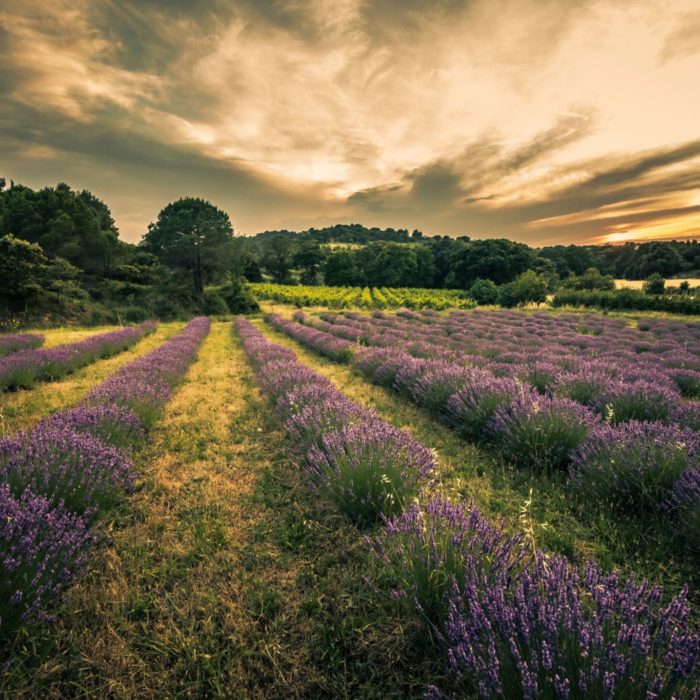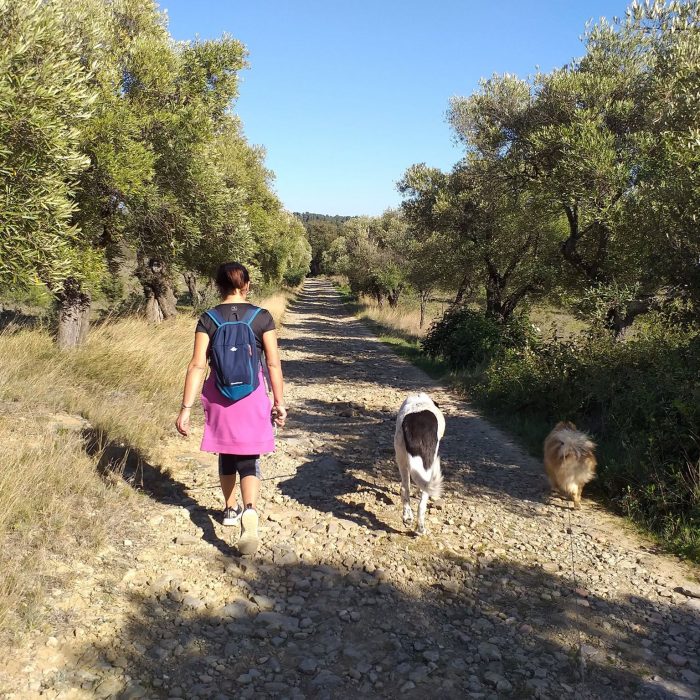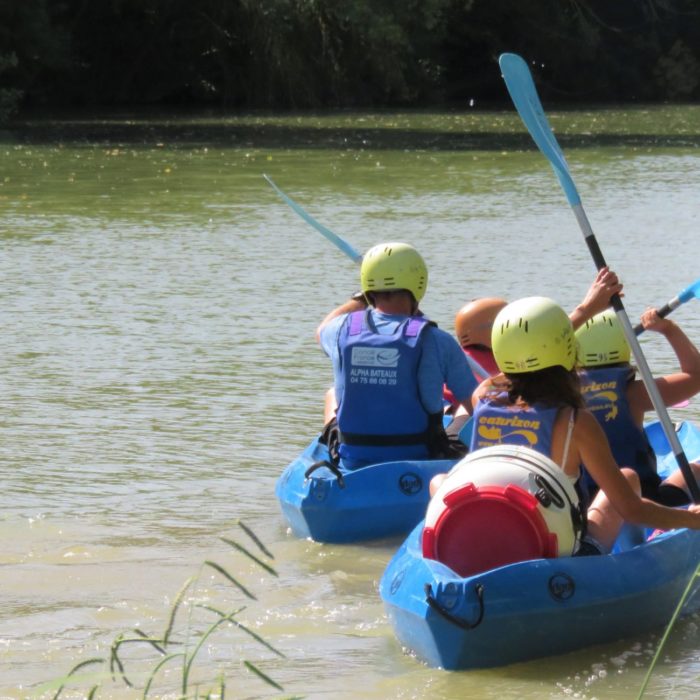Exploring a real little France
The Aude writer, journalist and poet, Gaston Bonheur, who knew how to speak about his homeland in a rocky, sunny accent, described the Aude as the 'little France'. This description is confirmed by all those who are curious to explore one of the main départements in France in terms of its rich biodiversity.
The exceptional natural heritage and the rich flora and fauna with all the different varieties (like wild orchids) make this area synonymous with getting away from it all.
Here, nature is still in charge and the climates change according to the locality, which as shaped our landscape and offers a real diversity. Animals are king and species of flowers and plants find the best natural conditions for their growth here.
FOCUS ON NATURA 2000, natural sites identified for the rarity or fragility of the animal or plant species.
The massif de la Malepère, due to its Mediterranean and Atlantic influences, is an example of such a site, with a wide variety of plant species. A little Tuscan air, where they know how to live well, and where you can walk through oak forests and vines.
The vallée du Lampy, located on the southern slopes of the montagne Noire, is home to rare animal species, particularly 23 species of fish, including three which are of interest at a European level. Meadows, forests, rives and humid zones provide a perfect setting for a sometimes unexpected flora and fauna.
The gorges de la Clamoux, at the foot of the Pic de Nore, is a beautiful spot for bike rides and hiking. They are surrounded by striking limestone reliefs and have a wealth of cavities and underground networks. At the Gouffre de Cabrespine, you can go on a magnificent voyage towards the centre of the Earth. It shelters bats and is considered a nationally important site in terms of the conservation of chiroptera. #find out more
Our mountains - fill your lungs with pure air!
The legendary mountain of King Alaric
Located to the south-east of Carcassonne, this is the first buttress in the Corbières. It reaches 600 metres, and around 15 kilometres. Climb to the summit of Alaric for an impressive view! Legend has it that the tomb of the Visigoth king Alaric is to be found in a cave carved into the mountain...
Something not to be missed: The Alaric bénitiers, or clams
Located on the montagne d'Alaric, this strange limestone formation from the start of the first tertiary era has been dubbed the Bénitiers, or clams, a geological curiosity. Water entered into the and then froze, fragmenting the bases and thus creating these curious sculptures. Four Bénitiers can be seen, all a few metres from one another.
To get there, take the road to Monze. After passing over the motorway, at the end of the first bend, turn left towards the river Bretonne. Once you've crossed the bridge, you will have a choice of three roads. The one on the right leads to the Paillasses naturist site, the centre road, after twenty five minute climb, leads to the Bénitiers.
From there, you can appreciate a splendid panorama of the communes of Floure, Fontiès d'Aude and Trèbes...
La Montagne Noire: a refreshing spot
Above the valleys, carved out by the rivers, the pic de Nore, the highest point in the Montagne Noire at 1211 metres, is one of the first buttresses in the Massif Central, and gives you a unique view. In good weather, you can even see the Mediterranean. Between Aude and Tarn, near the Natural regional park of the Haut-Languedoc, the mountain is criss-crossed with varied hiking trails, with something for everyone, between pine and chestnut forests, rivers and lakes.
The Montagne Noire owes its name to the dark pine and spruce forests which spread over more than 3600 ha. You will also see splendid beech and oak. In summer, you can enjoy a refreshing dip in one of the lakes. In autumn, the incredible array of colours, with ochres, yellows and reds, will amaze you. If you like mushroom hunting, you've found a great spot! In winter, the peaks are often covered with a white blanket, perfect for walking, sledging and snow-shoeing.
More to see in the Montagne Noire: At the source of the Canal du Midi... The Prise d’Alzeau
Here, the Canal du Midi has been written into our history by Pierre-Paul Riquet who came to harness the water of the river Alzeau to feed the Canal, his life's work. The river, which feeds the seuil de Naurouze, was listed as a UNESCO World Heritage site, like the canal, in 1996.
The Prise d'Alzeau is, above all, a wonderful place to walk through the greenery, whether alongside the Rigole or scrambling over granite blocks.
The Montagne Noire still keeps some remains of its famous part in the history of industrial clothmaking. You can walk through the former Royal Manufacture in Montolieu, stronghold of clothmaking in the 18th century. On the other side of the mountain, in Mazamet, you can find some rare manufacturers of leather products. Carrying on to the mill at Brousses-et-Villaret, you can still see how paper is produced, with love and passion, and find out more about the history of the hundreds of papermills which ran on water from the Dure.
Le zelkova de Moussoulens®FILoSIK
In the Val de Dagne: "Here, time goes at walking pace," - Joseph Delteil
Leaving Carcassonne and the Cité spend a few minutes in a completely authentic setting, in the heart of the Val de Dagne.
Here, the landscapes are wild and even Mediterranean, in the Corbières, they're like a living painting from one of the great masters.
Vineyards, forests, scrubland, fields and rivers make up the sweeping landscapes in this valley, some twenty kilometres from Carcassonne, at the foot of Alaric. The Valley is home to small villages, each one more charming than the last.
Nestled at the foot of the hills, but still overlooking the valley and vines, they all have one thing in common, tranquillity. A true authenticity and way of life combine rest and pleasure. The first stop is in Montaur, with its narrow, medieval streets and the Niermans château, the architect behind the Folies bergères and the Moulin Rouge.
Cross the medieval bridge (12th century) in Rieux en Val, or in the poet, Joseph Delteil's country in Villar en Val, with its poetic trail. All along your journey, consider the wise words of the poet, "Here, time goes at walking pace." Open your eyes, smell, breathe, feel the real sense of the land.
In the Val de Dagne, the vines cling to the hillsides between the yews and the rocks. The wine makers in this area create 'Corbières' wines: wines of character, filled with sunshine. On these same slopes that border the valley, livestock breeding is growing: Gascon cows and pigs, goats... Even mozzarella is produced, using the milk from the buffalo near Pradelles-en-Val. The Mediterranean climate is also conducive to other crops and livestock: rosemary honey, Lucques garrigue olives, with a herby note...
You could also meet a farmer who makes sourdough bread, baked in a wood oven, using wheat they have grown on their farm.
From farm to farm
Something not to be missed in the Val de Dagne: Roman bridges
In Rieux-en-Val, a small 12th century stone bridge spans the Alzou gracefully. You really shouldn't miss this thousand year old stone work. It is a very narrow bridge, which can only be used by pedestrians is evidence of a rich past, linked to the Abbey in Lagrasse, just a few kilometres away. Just by the bridge, you'll find a picnic table, perfect for a little break. This 47 metre long bridge, with its 5 metre spans, really should not be missed!
The same can be said about the magnificent 13th century old bridge in Lagrasse, near the abbey, and the bridges in Monze and Villar en Val
Water in Greater Carcassonne - Perfect refreshment
Travelling along streams and rivers
The source of the Aude is found in the Pyrenees, in the Carlit massif, and the river flows to the Mediterranean, 224 kms away. It runs through Occitanie and the département which bears its name. In Carcassonne, you can enjoy a picnic or a break on the banks or on the île de la Cité, with views of the ramparts. You can also canoe along the river in the Haute-Vallée or Minervois.
Greater Carcassonne also has numerous other rivers, such as the Alzeau in the Montagne Noire, the Orbieu in Corbières, the Clamoux near Cabrespine and the Fresquel, which comes through Lauragais and flow on to Alzonne and Pennautier.
The canal du Midi
Listed as a UNESCO World Heritage site, the Canal du Midi was constructed by Pierre-Paul Riquet in the 17th century. This exceptional, 240 km work links Toulouse and Sète, and is fed by water from the Montagne Noire. It was previously used for the transfer of goods, particularly wine, and is now a place for walks and relaxation. On foot or on a bike, you can follow the tow paths. You can board a canal boat for a guided tour in Carcassonne to discover the countryside and the unusual passage through a lock.
The towns and villages which the Canal flows through: Alzonne, Villesèquelande, Caux et Sauzens, Carcassonne, Villedubert, Trèbes, Marseillette, Puichéric, La Redorte, Azille
The dried lake in Marseillette
Rice production in Aude, it's true! A lovely place to stop off at the edge of Minervois is the Marseillette lake, in the area where the singer Olivia Ruiz was born. Rice, grapes and apples are the main produce found there. The quiet, flat paths are perfect for a walk or bike ride and the original irrigation system is interesting Before the 19th century, the lake was closed and didn't produce anything. In 1804, the new owner, Marie-Anne Coppinger, the widow of an Irish revolutionary, began the initial works, having three large channels dug. Four years later, the lake had definitively dried up and the site started being used for production, with the creation of 18 smallholdings...
The lakes
The Cavayère and Jouarres lakes are perfect for relaxation and fun, with your partner, family or friends! Swimming, water sports or treetop walking, picnic or restaurant, so much to choose from! Diverse landscapes for a whole range of activities!
Lakes in the Montagne Noire: Pradelles, le Lampy, Laprade, Montagnès
Lakes and reservoirs: Villalbe, Trèbes, Laure-Minervois, Alzonne, Capendu (no swimming)
The beauty of our vineyards
You'll see vines throughout your stay. The perfect backdrop for a holiday, a splash of sunshine and the promise of a nice glass of wine. Greater Carcassonne is inextricably linked to vines and wine. In Cabardès, Corbières, Malepère or Minervois, the vines are like their birthmark and a measure of pleasure...
Making the most of the landscapes
The very best views
- From the Pic de Nore
- From mont Alaric
- From the ramparts of the Cité de Carcassonne, 360°
- From the tower of the church of Saint-Vincent in Carcassonne
- From château de Saissac
On foot, on a horse, or on a bike
First-hand experience
"The Capitelles trail, superb! Great family memories and it was the children who enjoyed it most... They found loads of stone 'cabanes'! Fantastic, we'll definitely be back." Laurence on visorando
The Capitelles, or cabanes, these stone igloo-shaped constructions that are so typical of the region are found on many of the hiking trails and in many parts of the Greater Carcassonne landscape. With a square or rectangular lower section, they have a hemispheric roof. They were used by farmers as temporary shelters until the First World War.
For a number of years, associations have been leading restoration works, bringing life back to these pretty, little houses, and numerous trails now allow visitors to discover them, particularly the dry-stone trails in Aragon, Conques (near the Salitis estate), and Laure Minervois.
On a road trip
Have an unusual trip through our landscapes in an authentic 2CV!



